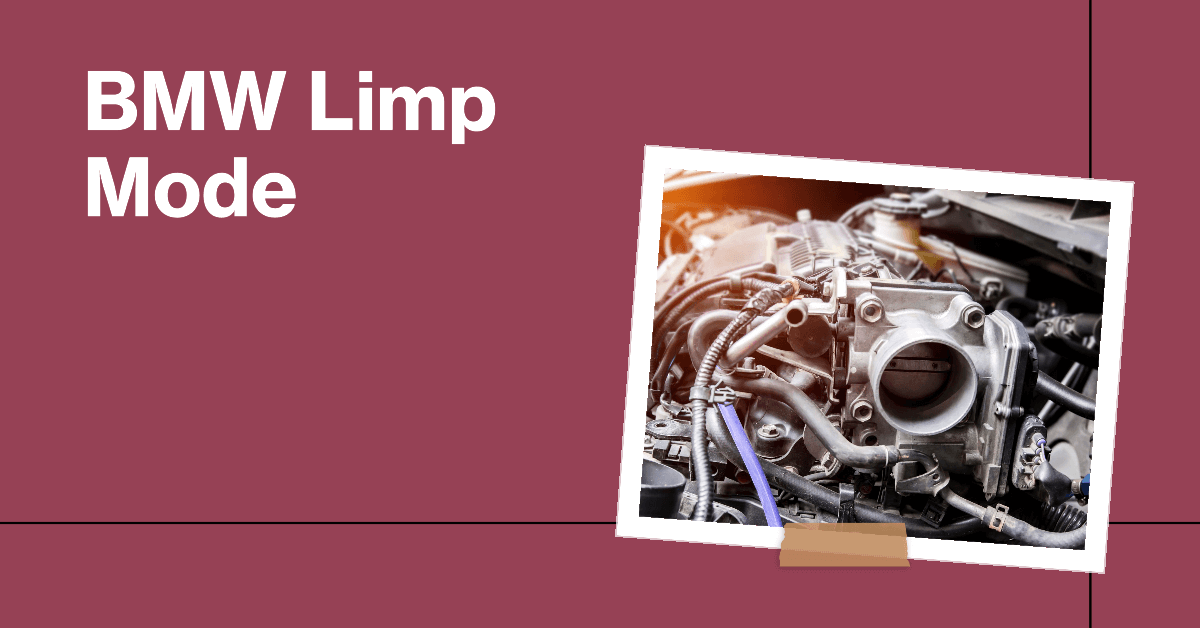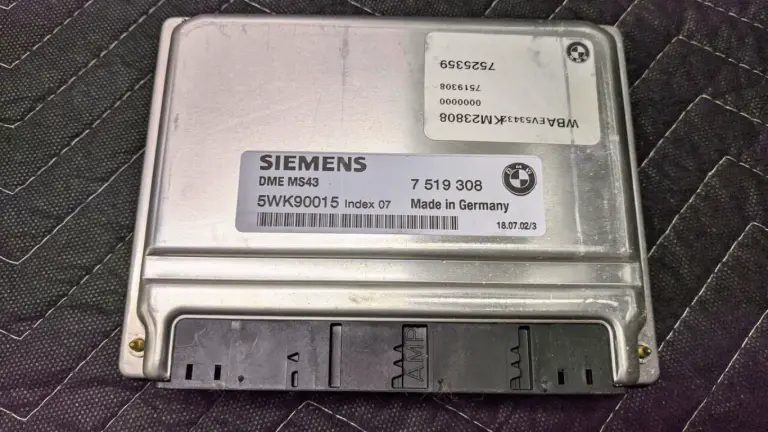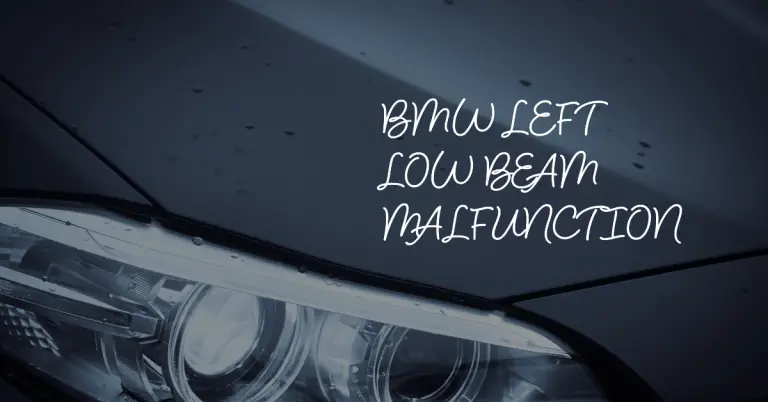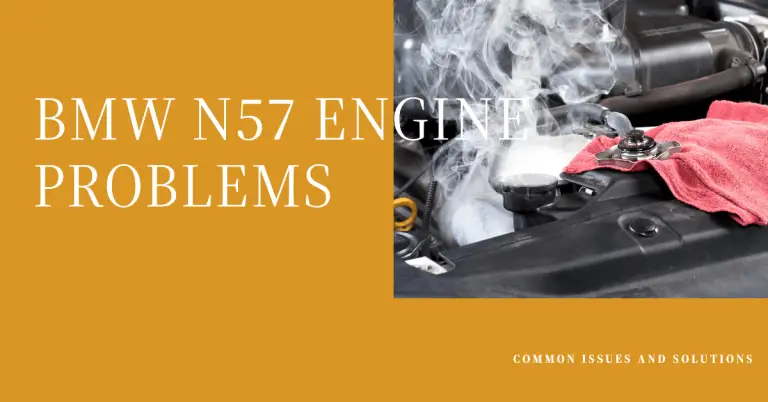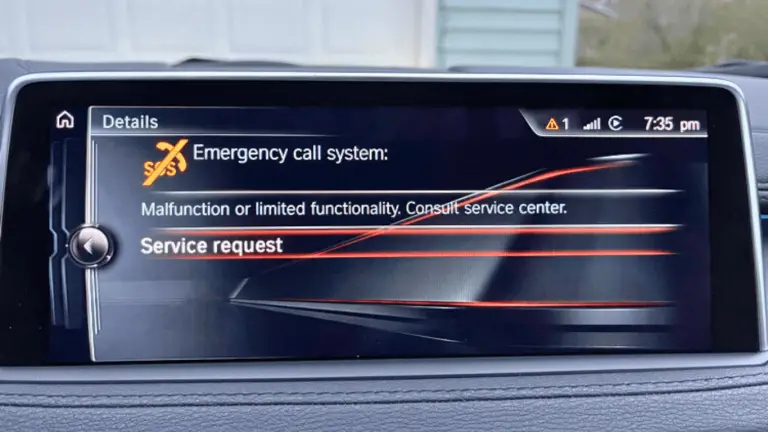BMW Limp Mode: What Causes It and How to Fix It
Do you own a BMW that suddenly lost power and went into limp mode? This protective feature can be alarming and frustrating if you don’t know what triggered it. This comprehensive guide will explain everything you need to know about BMW limp mode including the common causes, symptoms to look for, diagnostic tips, and both DIY and professional repair solutions to get your BMW back up and running at full speed again.
Have you ever wondered:
What exactly is BMW limp mode and why does it happen?
Limp mode, also known as fail safe or reduced power mode, is a protective mechanism implemented in BMW models to protect the engine and transmission from catastrophic damage. By limiting engine RPMs and vehicle speed, limp mode allows a BMW with a problem to be driven safely to a repair shop.
What typically causes BMW limp mode to activate?
The most common culprits for unexpected BMW limp mode include faulty sensors, low oil pressure, engine overheating, and transmission issues. Electrical problems and wiring faults can also trigger limp mode.
How do you know if your BMW is in limp mode?
Common symptoms include reduced engine power, jerky acceleration, and the service engine soon light. Transmission slipping between gears or getting stuck in one gear can indicate a limp mode triggered by the transmission.
How can you diagnose the root cause of BMW limp mode?
Scanning for diagnostic trouble codes is the first step to pinpoint the source. Then monitor sensors, engine temps, electrical components, and transmission fluid condition to isolate the issue.
What are the best ways to fix BMW limp mode and reset the system?
Repair techniques range from simple sensor replacements and overheating fixes to more complex transmission repairs and electrical rewiring. A scan tool reset can clear limp mode when the underlying problem is addressed.
This comprehensive guide will cover all of these questions in detail, providing BMW owners with an in-depth look at how limp mode works, what goes wrong to cause it, and all of the best methods for diagnosing and repairing BMW limp mode issues. Let’s start by looking at what exactly limp mode is and why BMW uses it.
What is BMW Limp Mode?
Limp mode is an important protective feature integrated into BMW models to prevent catastrophic engine and transmission damage. Also known as fail safe mode or reduced power mode, BMW limp mode essentially reduces engine power and RPMs and also limits the vehicle’s speed.
This allows a BMW with a mechanical or electrical problem to be driven safely at low speeds to get to a repair shop. While frustrating for drivers, it is an important fail safe that gives you time to diagnose and repair the underlying issue.
Here are some key things to know about how BMW limp mode works:
- The engine computer detects a problem through sensor inputs and fault codes. This could be anything from low oil pressure to a faulty camshaft sensor to transmission issues.
- The computer then limits the RPMs and vehicle speed by reducing engine power output. On automatic transmission models, it will lock the transmission in a single gear.
- The service engine soon warning light will illuminate to alert the driver of the issue.
- BMW limp mode reduces stress on drivetrain components so further damage is avoided.
- Limp mode allows the vehicle to still be driven, just at reduced speeds and acceleration.
- Diagnostics can be performed to identify the root problem while limp mode is active.
- Once the problem is repaired, limp mode can be reset with a scan tool by clearing codes.
Understanding what causes limp mode to activate in the first place is key to diagnosing and addressing the problem. Next we will look at the most common issues that trigger BMW limp mode.
Common Causes of BMW Limp Mode
There are a variety of issues that can prompt a BMW model to go into limp or fail safe mode. Here are some of the most prevalent causes:
1. Faulty Sensors
One of the top causes of unexpected BMW limp mode is a faulty sensor. These sensors constantly monitor critical drivetrain parameters. When they malfunction or send abnormal readings, limp mode will activate in response. Some of the key sensors include:
- Crankshaft and Camshaft Sensors: Monitor engine speed and position. Faulty readings cause irregular spark timing and fuel injection.
- Mass Airflow Sensor: Measures air entering the engine. Defective or dirty MAF sensors cause poor engine performance.
- Oxygen Sensors: Monitor oxygen content in exhaust to regulate fuel mixture. Bad O2 sensors cause inefficient fuel usage.
- Throttle Position Sensor: Tracks throttle valve angle. Faulty TPS input causes transmission and acceleration issues.
- Wheel Speed Sensors: Monitor transmission output shaft speed. Bad readings cause transmission problems and limp mode.
- Coolant/Engine Temperature Sensor: Detects engine overheating issues. Faulty temp sensors can fail to detect and prevent overheating damage.
If any critical sensor is malfunctioning, sending incorrect data, or stops communicating with the ECU, it can trigger BMW limp mode to activate.
2. Low Oil Pressure
Sudden drops in oil pressure are another common cause of BMW limp mode. Oil pressure is monitored by the oil pressure sending unit. When oil level drops too low or the pump cannot maintain pressure, it triggers safety mechanisms to avoid engine damage.
Oil pressure problems stem from issues like oil leaks, worn pump components, and sludge buildup. Low oil pressure limits vital lubrication and cooling inside the engine, so limp mode limits RPMs and speed to prevent catastrophic failure in these conditions.
3. Engine Overheating
BMW engines must maintain optimal operating temperature for performance and longevity. When temperatures start to spike, limp mode will kick in to avoid heat-related engine damage.
Common causes for overheating include stuck thermostats, coolant leaks, failed water pumps, slipping fan clutches, and overloaded cooling systems. Limp mode counters overheating by limiting RPMs to reduce strain.
4. Transmission Issues
The transmission is also protected by BMW limp mode activation. Automatic transmissions that start slipping between gears or delay shifts often trigger limp mode. Mechanical issues inside the automatic transmission or with clutches and gear sets will be detected by wheel speed sensors.
Sticking solenoids that control transmission fluid pressure and torque converter lockup can also prompt limp mode activation. This restricts the transmission to a single gear and limits vehicle speeds and acceleration.
5. Electrical Problems
Since proper engine, transmission, and drivetrain operation relies on electrical signals, faulty wiring and electrical components can also cause BMW limp mode. Short circuits, bad grounds, faulty control units, and even rodent damage to wiring harnesses are common electrical issues.
These disrupt vital data signals to ECUs and between components. When critical communications are compromised, limp mode will activate.
Now that you know what causes BMW limp mode, let’s look at how to recognize the common symptoms.
BMW Limp Mode Symptoms
Recognizing the signs of BMW limp mode allows drivers to react quickly to mitigate any potential damage or risks. Being aware of the common symptoms makes it easier to identify limp mode versus other unrelated issues.
Here are the main symptoms displayed when BMW models go into limp mode:
- Reduced Engine Power: Lack of acceleration and throttle response is one of the most noticeable signs of BMW limp mode. Engine output is purposely limited by cutting fuel and spark.
- Hard Accelerating: Attempting to accelerate from a stop or at highway speeds will feel very sluggish in limp mode. Rapid acceleration may not be possible.
- Service Engine Soon Light: The service engine light illuminating indicates the engine computer has detected a problem and activated limp mode in response.
- Transmission Slipping: Automatic transmission problems that trigger limp mode will cause noticeable slipping between gears along with hesitant shifting.
- Stuck in One Gear: In severe transmission limp modes, the transmission may become locked in a single gear that limits vehicle speeds.
- Rough Idling: Limp modes from faulty sensors, low oil pressure, or electrical issues can cause very rough, uneven engine idling.
Recognizing these symptoms quickly alerts drivers that urgent diagnosis of BMW limp mode is needed. Delaying repairs risks further damage and breakdowns. Acting quickly also helps reset limp mode and restore normal performance faster after fixing issues.
Now let’s look at effective diagnostics and troubleshooting when BMW limp mode strikes unexpectedly.
Diagnosing BMW Limp Mode
Diagnosing the root cause of BMW limp mode is crucial to making the proper repairs. While it may be tempting to just reset the codes, the underlying problem must be identified and fixed. Otherwise limp mode will keep returning.
Here are the best diagnostic steps to accurately pinpoint the issue causing limp mode:
Scan for Diagnostic Trouble Codes
The first critical step is to scan for any diagnostic trouble codes stored in BMW’s onboard diagnostics system. Code readers compatible with BMW CAN bus systems can access this data. Common limp mode codes include:
- P0340 – Camshaft Position Sensor
- P0390 – Camshaft Position Sensor
- P0030 – Oxygen Sensor
- P0117 – Engine Coolant Temperature Sensor
- P0720 – Output Speed Sensor
- P1556 – Governor Pressure Sensor
The specific trouble codes narrow down the faulty components triggering limp mode. Codes should not be erased until completing diagnosis and repairs first.
Check Sensor Function
After identifying any suspect sensors from code scans, further electrical diagnosis can confirm if they are still functional. Check sensor connectors for damage, test harness continuity, and ensure proper sensor outputs with live data scans.
Compare sensor data with service specifications to test for normal function or out of range issues. This helps isolate faulty units.
Monitor Engine Temperature
When overheating is suspected, closely monitor engine temperature with a scan tool. Check for abnormally high readings at idle and during driving.
Inspect cooling system components like the radiator, hoses, water pump, thermostat, fan operation and coolant level. Look for leaks or issues causing overheating and subsequent limp mode activation.
Inspect Transmission Fluid
Check transmission fluid level and condition when limp mode is transmission-related. Low fluid from leaks can cause pressure loss and slippage into limp mode. Discoloration and burnt smell signal overheating issues are present.
Debris on the dipstick can also indicate internal wear and damage inside the transmission. Fluid flushes and component repairs may be needed.
Electrical Diagnostics
For limp modes stemming from electrical gremlins, advanced electrical troubleshooting is required. This includes tracing wiring harnesses for damage, testing control units and modules for proper operation, and inspecting all engine grounds and connections for corrosion and resistance.
If you don’t have training in advanced electrical diagnostics, enlist a professional BMW technician to tackle electrical limp mode causes.
Pinpointing the root failure is critical before attempting any repairs to exit BMW limp mode. Now let’s look at the solutions and fixes to address limp mode issues.
How to Fix BMW Limp Mode?
The best repair solutions will depend entirely on the specific cause of BMW limp mode in your vehicle. Here are some of the most common limp mode repair procedures:
1. Replace Faulty Sensors
For limp modes triggered by crankshaft position sensors, camshaft sensors, MAF sensors, O2 sensors, wheel speed sensors, and other faulty sensors, replacing the malfunctioning unit is the solution.
Always use OEM BMW sensors to ensure proper fitment and performance. Inspect sensor connectors for damage during replacement and make sure new units are securely connected.
2. Address Low Oil Pressure
Limp modes caused by low oil pressure require diagnosing the root cause, such as leaks, sludge blocking pickup tubes, bad pumps, or worn bearings. Repair the oil system components or engine internals as needed.
Change the engine oil and filter after repairs to flush any contaminants. Use high quality oil of the proper viscosity. BMW-approved additives can help clean sludge.
3. Cool and Bleed Cooling System
Engine overheating limp modes must be addressed by repairing the issues allowing temperatures to spike. Replace bad water pumps, thermostats, and radiator caps as needed.
Flushing the system and bleeding out air pockets restores proper coolant circulation. Repair any leaks or clogs in hoses. Clean radiators can improve cooling performance.
4. Repair Transmission Problems
Automatic transmissions causing limp mode must be repaired based on the specific internal issues found. Common solutions include replacing worn clutches, bands, gears, shafts, and torque converters.
Fluid flushes clear out metal particles and debris while sealing leaks prevents further damage. Sticking shift solenoids can often simply be replaced to restore proper shifting.
5. Electrical Wiring Repairs
Damaged wiring harness sections may need splicing or full replacement to restore proper signals. Clean or replace corroded ground points and control unit connections.
Identify and fix shorted or open circuits that are disrupting system communications and prompting limp mode response. Replace any faulty control modules or ECUs internal to the engine or transmission as well.
Some BMW limp mode causes are simple fixes, while others require extensive transmission overhauls or engine repairs. Work with a knowledgeable BMW specialist for major issues.
Now let’s look at the important step of resetting limp mode once your BMW is repaired.
How to Reset BMW Limp Mode?
The repair procedure alone does not immediately clear BMW limp mode in most cases. A scan tool is required to reset the ECU and exit limp mode after repairs are complete. Here is the general process:
- Repair the underlying issue that originally triggered limp mode based on diagnostic findings.
- Use a compatible scan tool connected to the BMW data link connector port below the dashboard.
- Access the ECU and transmission control modules. Select the option to clear diagnostic trouble codes.
- The BMW computer will scan for any lingering fault codes or issues after codes are cleared.
- Take the BMW for a short test drive to cycle the systems and confirm normal operation.
- Recheck for any pending codes. The service engine light should turn off once limp mode is fully reset if repairs were successful.
- Follow up with any necessary software updates or adaptations with the scan tool.
Resetting BMW limp mode properly is key to restoring engine power and normal vehicle operation. Always fully diagnose and repair the initial problem first before clearing codes.
Next let’s look at when it’s smart to have your BMW professionally assessed versus attempting your own repairs.
When to Take BMW to Mechanic for Limp Mode?
DIY repairs may be possible for minor BMW limp mode causes, like replacing a failed oxygen sensor. But major issues like transmission failures or serious engine problems are best left to professional BMW technicians.
Here are some good times to seek help from a BMW specialist:
- If your own troubleshooting can’t isolate the limp mode cause. Diagnostic capabilities and experience matters with complex issues.
- For any major engine repairs needed like low compression, timing chain tensioners, head gasket leaks, etc. Proper expertise preserves engine integrity.
- Transmission limp modes since internal transmission problems require specialized repair skills. Improper handling can make problems worse.
- For advanced computer diagnostics and recalibration. Shops have the factory tools and software needed for deeper ECU and module coding.
- If DIY fixes don’t fully resolve the problems and limp mode persists. Avoid wasting money on parts guessing at issues.
Seeking professional help upfront can save money, time and prevent exacerbating limp mode issues. Find a specialist experienced specifically with your BMW model for best results.
While not always preventable, there are some driving and maintenance steps you can take to potentially avoid BMW limp mode.
Avoiding BMW Limp Mode
No one likes the frightening feeling when engines suddenly lose power and limp mode strikes without warning. While not always avoidable, you can reduce limp mode likelihood with smart driving and car care:
- Don’t ignore check engine or service lights. Diagnose and repair issues right away to prevent cascading problems.
- Follow BMW factory maintenance schedules for fluid changes, filters, belts, seals, and critical components. Don’t defer maintenance.
- Watch for leaks and fix them early before substantial loss of oil, coolant, or transmission fluid occurs.
- Immediately address any overheating symptoms like high temps, steaming, boiling coolant and heat-damaged components.
- Drive conservatively, avoid heavy lugging and don’t bounce off redline. Lighten your load and ease up on pedal.
- Keep BMWs away from flood waters and deep puddles that can damage wiring. Watch for rodent nesting too.
While limp mode causes cannot always be prevented, drivers can reduce risks by paying close attention to warning signs and practicing preventative maintenance. Addressing problems promptly also helps avoid limp mode activation.
Conclusion
BMW limp mode can be an alarming and frustrating occurrence. Understanding the purpose of this protective feature along with the typical causes, symptoms, and solutions empowers you. Quick diagnostics combined with proper repairs based on root causes will have you safely back on the road at full speed again. Seeking professional assistance for major issues is smart when problems are complex. With some fundamental limp mode knowledge for your BMW, you can minimize risks and hopefully avoid this reduced power mode altogether through attentive driving and car care.

